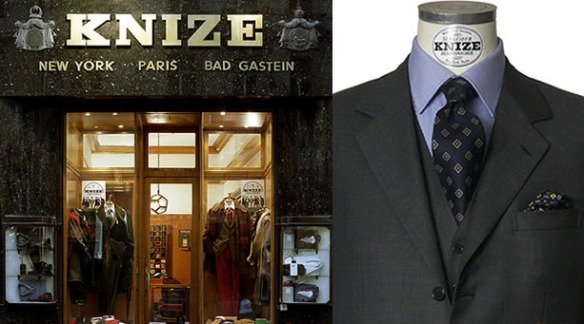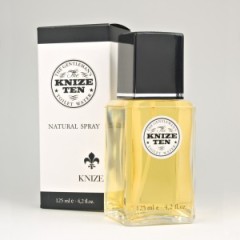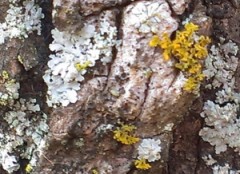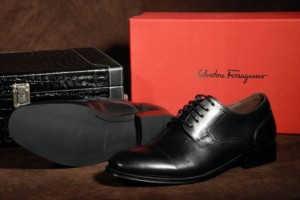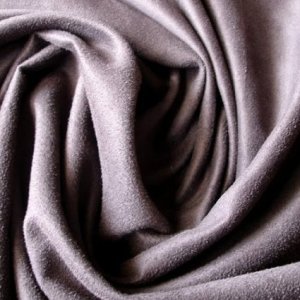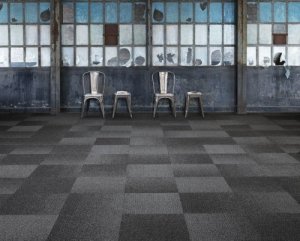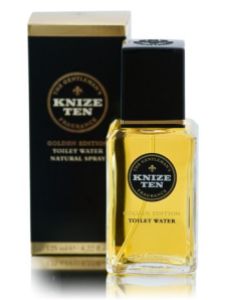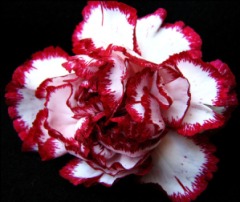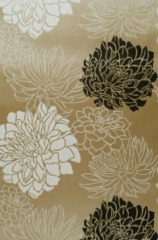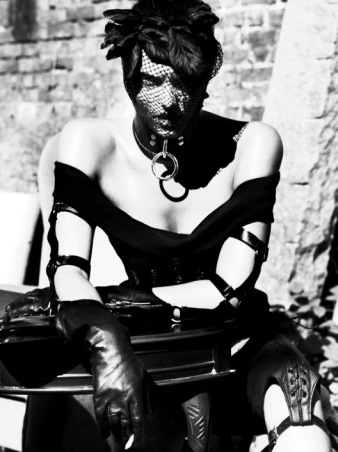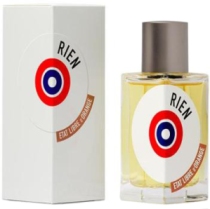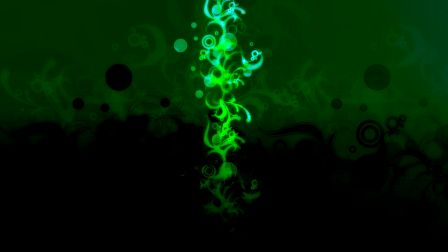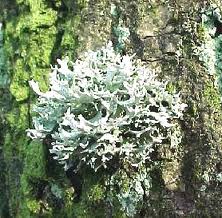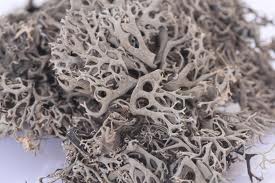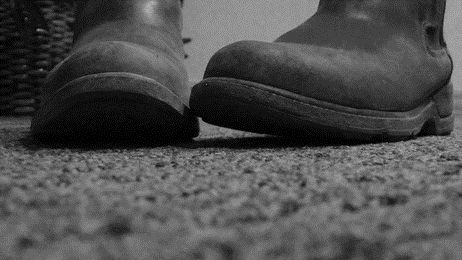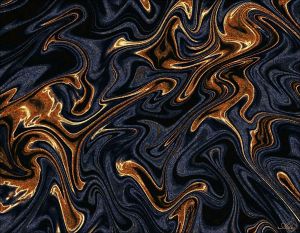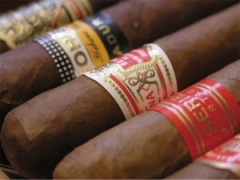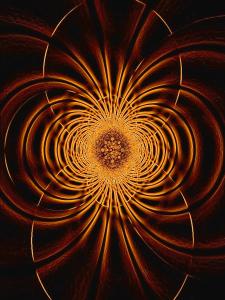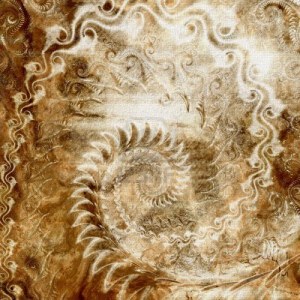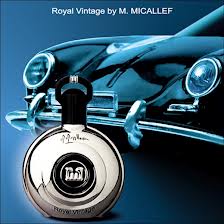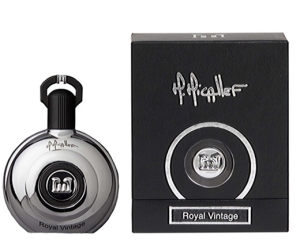Every perfume genre has its pioneering, benchmark classic, a fragrance by which all others who follow it are judged. The leather category might be the only one which has two leaders: Chanel‘s Cuir de Russie which came out in 1924, and the Austrian fragrance which followed it a year later from Knize called Knize Ten. One was inspired by the Russian treatment of leather and Coco Chanel’s affair with a Romanov prince; the other by the sport of polo as an emblem of aristocratic refinement. Both fragrances are centered around the use of birch tar leather, but they are very different.
Knize Ten is one of those legendary fragrances that leather lovers often hold up as the very best leather around. (Naturally, Cuir de Russie lovers don’t agree.) I decided to give Knize a whirl after hearing something about the company’s history which encompassed famous architects, figures who worked with Klimt (one of my favorite painters), and clothing clients who ranged from Marilyn Monroe and Marlene Dietrich, to King Juan Carlos of Spain. Knize Ten, in specific, was allegedly the scent of choice for both James Dean and David Niven.
I quickly discovered that there were two Knize Tens: Knize Ten original, and its special, 75th Anniversary version called Knize Ten Golden Edition. There seems to be endless debate as to the differences between the two, not to mention opinions about which version is better, so I’ve given each fragrance a few tests, as well as done a side-by-side comparison. I’ll take each in turn, after a brief foray into the history.
KNIZE & KNIZE TEN:
Knize is a very old, prestigious, Austrian men’s tailoring house, dating back to 19th century. Luckyscent’s history is inaccurate, referencing a start date of the 1920s, but First in Fragrance details the company’s precise origins:
Knize was founded in Vienna in 1858. […] In 1888 Kniže received the coveted title of royal tailor to the Austro-Hungarian Court. By the turn of the century many personalities, heads of state, artists and industrialists belonged to the select group of Knize’s customers.
[In 1909, the respected] architect Adolf Loos, who was known in Vienna for his pioneering [work…] designed a new shop facade in black marble and glass and designed new interiors. [The boutique became famous for its look and interiors, considered one of Loos’ best creations. Then, in 1921], Ernst Dryden was appointed to the Knize Company as designer. Dryden had studied with Gustav Klimt at art school and worked as a poster artist, designer and illustrator. Today Dryden is known as the star-designer of the 1920s who gave the Knize Company its avant-garde fashion image and its international reputation. […]
“Knize Ten” – the first men’s fragrance collection in the world was launched on the international market. “Ten” is known as the highest player-rated handicap in polo. For Dryden.., polo, the sport of the English nobility, was the ultimate symbol of elegance. Dryden also designed the packaging for the Knize Ten fragrance line, which still exists today in the same timeless design.
Some of Knize’s most famous clients included Oskar Kokoschka (who paid for his suits with paintings), Marilyn Monroe, Kurt Tucholsky, Josephine Baker, Marlene Dietrich, Billy Wilder and King Juan Carlos of Spain.
In 1925, the company released Knize Ten, an eau de toilette created by François Coty and Vincent Roubert. The company amusingly called it “Toilet Water,” a description which remains to the present day on both the bottle and its box. According to Luckyscent, one famous author, Hans Habe, reportedly said, “if he were cast away on a desert island, he would take Knize with him, since, for a man using a toilet water, it was really not so much a matter of undermining the morale of a beautiful woman than boosting one’s own.”
According to Luckyscent, the notes in Knize Ten include:
Lemon, bergamot, orange, petitgrain, rosemary, geranium, rose, cedar, orris, carnation, cinnamon, orange blossom, sandalwood, leather, musk, moss, patchouli, ambergris, castoreum and vanilla.
Knize Ten opens on my skin with a burst of crisp, zesty, cool lemons, bergamot, and the bitter wood, twiggy note of petitgrain. The citrus cocktail is infused with smoky, dry cedar, a touch of rosemary, copious amounts of oakmoss, and leather. For an instant, the leather note smells like new shoes, but it soon takes on the tarry, phenolic aroma of smoky birch tar. It’s raw, rubbery, a tinge industrial, and quite smoky. The birch tar smells sharp and dark, but also woody with a hint of chilled, piney elements evocative of a dark, wintery forest. A forest infused with lots of latex rubber and some Michelin tires.
The forest impression really stems from the overall effect of all the green elements floating around. Most significant is the oakmoss which feels like lichen growing on tree bark, thanks to its dryness and the pungently mineralized, slightly fusty undertones. There is also a touch of geranium with its equally pungent, slightly bitter aroma of peppered leaves. Lurking underneath are the tiniest flickers of rose, powdered iris, and patchouli with a berry-like nuance. The smallest suggestions of vanilla-infused powder, animalic castoreum, and warm sweetness stir deep in the base. They’re all rather muted and insignificant, however. As a whole, Knize Ten’s main bouquet at first is of crisp, chilled, zesty citruses infused with fusty, mineralized, grey oakmoss absolute, trailed by black, tarry, rubbery leather in third place.
Ten minutes in, Knize Ten starts to shift. The lemon recedes from the lead to make way for the leather to take the main stage besides the oakmoss. There is suddenly a subtle florality to the scent, as a sharp, fiery carnation comes to stand in the wings. Standing by its side is powder, along with a clean white musk that, I must say, feels rather synthetic and gives me a faint twinge in my head. In the background, the rose pops up now and then, along with the geranium, patchouli, and vanilla. The petit grain and cedar add a faint suggestion of woodiness, but they’re muted and stay at the edges.
To my surprise, the birch tar begins to feel almost tamed by the other elements. Fifteen minutes in, Knize Ten softens and increasingly takes on the aroma of “new shoe” leather, infused with and almost powdery oakmoss and a hint of citruses. The birch tar’s phenolic, rubbery, smoky tonalities remain, but they feel overshadowed by the more sanitized, refined, leather.
At times, the clean, powdered, fresh elements create a rather industrialized impression, almost akin to “new carpet” aroma in an office. It’s an odd mix at times. On one level, it feels like an elegant, refined, and a seamless blend of expensive, “new,” unbroken leather shoes with a touch of suede. On the other hand, there is a discordant mix of clean musk and sweet powder that vie with dark, tarry, smoky, rubber latex like Michelin tires or some sort of rubber toy. I suppose the real problem is that I’m not a fan of either powderiness or the increasingly dominant white musk, a synthetic to which I’m quite sensitive.
Knize Ten really is very simple, uncomplicated, and largely linear scent on my skin. About 75 minutes in, the fragrance hovers a mere inch, at best, above the skin and is primarily a soft, powdered, clean, grey suede with synthetic white musk, oakmoss, and “new shoe” leather. There remain touches of the birch tar, but the perfume is really mostly just iris-y suede on my skin. I have to admit, I’m extremely surprised by how powdered and soft the fragrance is, not to mention the fact that it turned to suede so quickly.
The powdered element takes on an increasingly vanillic sweetness that slowly begins to take over during the next few hours. The muted floral elements weave in and out like ghosts, and are generally quite insignificant if a lesser amount of Knize Ten is sprayed, but more noticeable if a greater quantity is used. For the most part, the rose is the main flower, but there is a floral iris folded within the sweetened suede that is Knize Ten’s dominant note.
By the start of the 5th hour, Knize Ten is a soft, vanilla suede with a strong hint of oakmoss and a lesser touch of clean, white musk. The birch tar hovers in the background, but it’s very muffled. As time passes, the sweet, vanilla powder increasingly becomes the sole focus of Knize Ten, with all the other elements retreating to the sidelines. The clean musk is the first to leave, then the oakmoss.
About 8 hours into Knize Ten’s development, the perfume is a soft, fuzzy, sweetened vanillic suede with the occasional, fleeting whisper of smoky birch tar and a hint of floral iris. Eventually, even the suede fades away, leaving an almost baby powder gentleness infused with vanilla. The scented, sweetened powder is comforting and soothing in a way, but also disappointingly simplistic. It is most definitely not me, and yet, there is something genuinely appealing about both Knize Ten’s middle suede stage and its soft finish.
What completely took me aback, however, was the fragrance’s longevity. Knize Ten lasted just a hair over 12 hours on my perfume-consuming skin, which is utterly fantastic for an eau de toilette. As for sillage, Knize Ten has a very strong start that softens less than 20 minutes into the perfume’s development. It turned into a skin scent about 90 minutes in, which isn’t a huge surprise for an eau de toilette. The longevity, though, is very impressive. I’d like to see a Jean-Claude Ellena eau de toilette last half as long, but I won’t hold my breath. I’d end up asphyxiating myself.
I’ve tested Knize Ten several times, and the general outlines of its development don’t vary. One thing I did notice is that quantity makes a difference. When I applied more of the scent, I detected more floral notes and less synthetic white musk. The castoreum in the base was also evident, though it was muted, and it added a minuscule whisper of velvety, animalic “skank” that was not apparent with a small quantity. In addition, there was a subtle spiciness, and a distinct cinnamon element in the middle phase that was quite nice. In contrast, when I applied only a little of the perfume, the floral element was largely nonexistent! It also took far less time for the birch tar aspect to weaken, and then to retreat to its muted position on the sidelines; the powder was more dominant more quickly; and the whole thing turned to “new shoes,” followed by suede, in only an hour. Regardless of dosage, however, Knize Ten always ended up primarily as suede with vanillic powder on my skin; it simply took an hour or two more to get to that core essence if you applied on a lot.
I have to admit, I’m a bit bewildered by how Knize Ten manifested itself on my skin, given all the reports of the “ultimate” leather, combined with criticism about petroleum elements and “public washrooms.” Yes, those who don’t like Knize Ten definitely have some sharp words for it, and I think it all comes down to the birch tar. You simply have to like the note — in all its possible manifestations. On some people, it can take on a rubbery, latex-like aroma, on others a tonality that their nose translates as “dark petroleum” or “public restroom.”
Fragrantica commentators are firmly split into two camps: fans and haters. Some examples of how Knize Ten smells to different people, including a number of women:
- Hmmm, all I’m getting from this is a very nice vanilla leather, with some nice flowers. I was looking forward to testing, what with the long history of this fragrance, but I have to say I’m a bit disappointed. There’s nothing wrong with it, but it’s just a bit, well, vanilla.
- Yes, yes, yes! Here is a real, 1920’s smoky leather. Knize Ten smells properly leathery and smoky, rounded out by an ambery, floral heart that reminds me somewhat of L’Heure Bleue. Knize Ten is nostalgic in the best sense of the word. [From a woman.]
- there’s some institutional cleaner notes in here which suggest a public washroom. There is a mildly skanky note to this stuff that’s throwing the whole fragrance off for me.
- It’s the strongest, skankiest leather I’ve ever smelled, and while it doesn’t smell animalic by any means, it does have that “porta potty” smell I get from other leathers like Royal English Leather. Meaning, it doesn’t smell like urine or feces, it smells like the pink aroma of the restroom itself.
- The offensive opening reminds me of being in a car garage smelling petrol, tar and rubber and then suddenly the garage changes into a shop where they sell lots of leather shoes! Really amazing…. After that it changes again in a very very distinguished, sophisticated, not offensive and manly scent with perfect sillage and longevity. [¶] The dry down is a perfect original smell of (mainly) leather, amber, a touch of vanilla which makes you feel like a real man. Genuine leather!!
- Knize Ten lives up to all of its hype, and then some. It has become my favorite leather fragrance. [¶] Knize Ten smells like the interior of a brand new luxury car with leather upoholstery. We’re not talking about black leather, like in Fonzie’s leather jacket. This is a soft, tan-colored leather smell that is also spicy, no doubt acheived by the presence of cinnamon. The addition of iris to the leather gives Knize Ten a hazy, dusky smell, adding to its allure and giving the scent great depth. It has a wonderful oily glow to it that the best leathers have, without smelling like gasoline.
My experiences aren’t the same as the majority of those on Fragrantica, but you can see the wide range in opinions and some overlap. I definitely agree that the powder and synthetic white musk combine with the suede tonalities to create an “institutional cleaner”accord. I thought it smelled like new carpet in an office, while others think it smells like “the pink aroma of a restroom.” Either way, there are a few notes in Knize Ten that I think take some getting used to if you’re unaccustomed to this sort of leather. However, I also believe that once you get over the hump of the first hour, Knize Ten becomes much easier. The iris-y suede and “new shoe” leather is refined, and the drydown’s vanilla powder quite comforting in an, unexpected odd way.
All in all, I wasn’t blown away by Knize Ten. What showed up on my skin was well-done, and had refined elements, but it wasn’t all that exciting, complex or interesting to me. It was just simply…. fine. Nice, even enjoyable at times, but I’m struggling to be more enthusiastic. I don’t think it’s merely a case of expectations or hype. It’s a question of the perfume’s simplicity, my personal tastes, and my skin chemistry. I missed the iris-appreciation gene, don’t like powder, can’t abide synthetic white musk, and generally can’t understand what’s so fascinating about suede. So, a largely simple, lifeless suede with lots of vanilla powder and some vaguely floral touches… eh. It’s nice. At the same time, I can’t help but shrug, or ponder a nap….
KNIZE TEN GOLDEN EDITION:
In 2000, on the 75th Anniversary of the original Knize Ten, the company launched Knize Ten Gold Edition which some people shorten to “Gold” or “Gold Edition” for simplicity. I’ll just call it “Knize Gold.” According to Luckyscent, the new version has the same notes as the original, but there are small differences:
The dry woody character of the historic fragrance is softened by more decisive floral notes, balanced out by spices and citrus to give it warmth and body, fruit of a truly special year.
First in Fragrance says that “Knize Ten Golden Edition is a softer version of Knize Ten, the formula was refined as some customers, found the original Knize Ten a little too tart.” I find definite differences between the starting points of the two scents, but they end up in the same place at the end.
Knize Gold opens on my skin with a strong bouquet of florals, just a whisper of oakmoss, and hardly any citrus tonalities. Instead, the dominant note in the first few minutes is the carnation which feels very spicy, followed by a pale pink rose, and a powdery, rooty iris. The flowers are all infused with birch tar leather, then flecked with pungent, peppered geranium leaves, and dry, smoky woods. As usual, the birch tar is strongly tarry, smoky, and with black rubber latex tonalities. Yet, the phenolic, black tar is countered by the floral notes, the touch of pepperiness, and a spicy bite.
In the background, the petit grain adds a bitter woodiness to Knize Gold, while the strong cedar element calls to mind a dry, dusty antique chest of drawers. There is a definite dusty quality to Knize Gold’s opening minutes. Part of it stems from the dry, wood tonalities, while the rest comes from the powder and the fusty oakmoss. The latter is surprisingly mild and weak in Knize Gold, especially as compared to Knize Ten where it dominated much of the opening salvo. On a positive note, the synthetic element in the base (from the white musk) is equally muted.
As a whole, Knize Gold feels much less crisp and cool than its forbearer. The citric notes are strongly reduced, covered by a strong floral aroma that initially dominates even the leather. The overall, opening bouquet is of: spicy, peppered carnation; softer, sweeter florals; tarry, smoky, raw, birch leather; dust; powder; dry cedar; a bitter pungency; and some minor oakmoss.
Knize Gold begins to transform 15 minutes into its development. Muted hints of sweetness start to slowly rise to the top, turning the fragrance softer and warmer. There are touches of dry, muted patchouli, along with cinnamon, and vanilla. Further down in the base, the castoreum begins to stir, adding the merest suggestion of a velvety, slightly musky, animalic skank. Ten minutes later, the first hint of orange blossom appears, though it doesn’t stay long and seems to vanish within minutes.
By the 30 minute mark, the cinnamon and vanilla become increasingly significant. They join the main players on the stage, countering the dry, dusty, woody elements and adding some softness. Down below, in the base, there is an unexpected creamy, woody smoothness, though it never smells like true sandalwood to me. There is also the very first hint of something ambered. The overall combination has the effect of transforming Knize Gold into a fragrance that feels smoother, warmer, less raw, and less fusty.
As the basenotes slowly tame the top elements, Knize Gold becomes much more sweet. It’s just the right amount, though, and balances out the fusty oakmoss, the dusty cedar, and the rubbery leather. It makes the main notes less sharp and aggressive, yet it doesn’t dilute them at all. At the same time, the florals start to soften and turn increasingly abstract. The carnation in particular recedes from the lead, and they all make way for the birch tar to take center stage.
Forty minutes in, Knize Gold becomes increasingly dominated by the leather. It is simultaneously the tarry, smoky, rubbery kind, and the leather of new, expensive shoes. In contrast, the original Knize Ten, at the same point in time, was primarily a “new shoe” aroma with some suede. Knize Gold has much greater rubbery tar and intensity. The sillage drops, the notes begin to overlap each other, and the fragrance turns into a smooth, seamless blend of lightly tarred leather, florals, dry cedar, oakmoss and vanilla powder, all resting upon a warm, ambered base flecked by cinnamon and castoreum.
About 90 minutes in, the perfume reflects the different variations on leather: “new shoes” infused with a light touch of something tarry, and accompanied by grey suede. The main notes are flecked by rose, iris, powdered vanilla, cinnamon, and oakmoss on an ambered base. As a whole, Knize Gold has much more leather, florals, dry woods, amber and warmth on my skin, significantly less oakmoss and powder, and hardly any citrus at all.
Yet, despite the differences in the opening, or the varying prominence of certain notes along the way, Knize Gold ends up in the same place as Knize Ten. At the start of the third hour, Knize Gold is a skin scent that is predominantly suede with vanillic powder, and just a touch of birch tar leather. The floral accords flit in and out of the top, while the ambered warmth of the base occasionally gives off whiffs of animalic, musky castoreum. The supporting notes eventually fade away by the end of the 6th hour, leaving nothing but the grey suede and vanilla powder. In the end, even the suede departs, and Knize Gold is just a blur of sweet powderiness.
KNIZE TEN vs. KNIZE GOLD:
I’ve outlined some of the differences in notes between the two scents, but I want to emphasize that they are largely subtle after the first hour. The most noticeable contrast is in the opening ten minutes, and in the two perfume’s overall feel at that point. Crisp, powdered, citrus-mossy coolness for Knize Ten; warm, floral, spicy, dusty woodiness for Knize Gold. Later on, the leather feels more profound and stronger to me in Knize Gold. In Knize Ten, the clean, industrial feel is more noticeable. Another difference is in the two perfumes’ relative longevity. For some reason, Knize Ten lasted longer on me and seemed sharper, undoubtedly because of the clean, synthetic white musk in the base which always sticks to me like glue. Knize Gold was softer, and the longevity clocked in only at 10.75 hours, instead of 12.
There are a few Basenotes threads contrasting the two fragrances. In one of the longer ones, there seems to be little consensus on which one has a more prominent leather note, or which fragrance is the overall favorite. Some think the birch tar is excessive in Knize Ten, and prefer the amount in Knize Gold. Others disagree, and think the leather is more profound in the Gold. A few think the original is more powdery, and opinions are evenly split as to which fragrance is better, or if they may have a feminine quality.
In contrast, on Fragrantica, most people seem to prefer the original Knize Ten. There aren’t a ton of entries, but what is interesting if you read them up close is that no-one seems to agree on the character of Knize Ten. One calls the Gold version more simple and stripped down. Yet, his words also indicate that he finds the Gold version to be more leathered, while he thinks the original is floral, something which he seems to prefer:
The golden edition seems like a simplied and stripped back version of the original. The burnt rubber smell is pronounced but the lingering floral seems to have dialled right back into the background. Those that find the original too floral should check this out. Otherwise, stick with the original. I find the original much more complex and better balanced.
Another commentator thinks the exact opposite when it comes to which scent has more leather. For “alfarom,” it is the original Knize Ten, not the Gold. He thinks the Gold is a “‘smoother’, polished” and “civilized version of the original” which is slightly richer in amber, but “toned down” with regard to the leather. As a result, he found the original Knize Ten to be more compelling.
One woman compared the two, found Knize Ten to be a better scent on men, but preferred Knize Gold for herself, putting in the same class as Habanita and L’Heure Bleue:
I also have to agree that the gold edition is a silver medalist compared to the original. That being said, this is one of the best perfumes I have ever smelled. I am a woman and would very happily wear it for formal occassions, in lieu of Shalimar, Habanita, L’Heure Bleue and all the other typical feminine leathers. I wouldn’t wear it to seduce men though, I would wear it as a tribute to the man who has seduced me… To my nose Knize is warmer, richer, more luxurious, more complex, exquisite! I cannot imagine why all men do not wear it, it is the absolute men’s perfume, if Rick in Casablanca was wearing a perfume it would be Knize Ten. Love!
I can see why some women would find Knize Gold to be like Habanita or L’Heure Bleue: it’s the mix of florals, sweetened, vanillic powder, and leather. For me, however, the fragrance that came to mind when I tested both versions of Knize was Etat Libre d’Orange‘s Rien (which, granted, has a definite Habanita stage). Rien was not my cup of tea; I can handle bondage leather, but not when mixed with painfully abrasive synthetics, industrial elements, and baby powder. My skin simply amplifies those notes to a crazy degree. It’s why I wasn’t a fan of Habanita, either, which I tried for the umpteenth time the other day in hopes of bullying myself into changing my feelings. It not only gave a sharp headache to someone in the room, but I had to scrub it off for my own sake.
As a result, I prefer both Knize fragrances to some of its relatives in the leather group. I think the Knize scents are a much smoother, more refined handling on somewhat similar, overlapping elements. As between the two, I think I like the Gold Edition more, if only because it was much more complex and nuanced on my skin. Like a number of the Basenoters, I experienced substantially more leather and florals. Plus, there was less of the horrid clean, white musk which I cannot stand. Yet, both Knize fragrances are well-done, and I urge those who love birch tar leather, powdered florals, and iris-y suede to check them both out. You may love them, though I recommend the Gold version more for women.
On a personal level, however, I still find it hard to get excited by either fragrance. If I were to opt for a powdered leather, I would need more warmth, spices, incense, and ambered resins to go with it. In a world where there is Serge Lutens‘ fantastic, powdered Cuir Mauresque, I cannot imagine being interested in Knize’s dull, sterile, lifeless suede. Is there a place for both of them in a perfume collection? Absolutely, especially as they are very different. But one fragrance often makes me contemplate a nap, and it’s not the Lutens….


